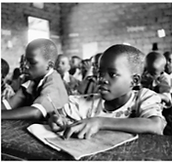Education Quarterly Reviews
ISSN 2621-5799




Published: 18 July 2022
Character Education Design in Practicum Class of Students of Fine-Art Education
Zulfi Hendri
Yogyakarta State University, Indonesia

Download Full-Text Pdf
10.31014/aior.1993.05.03.527
Pages: 87-96
Keywords: Instructional Design, Character Education, Character Values, Fine-Art Practicum
Abstract
Students of fine-art education may have developed in creative circumstances however, it is important to grow character enculturation. The study is aimed at designing character education for students of the fine-art education department. The study uses the descriptive research approach. Research data are obtained from interviews with lecturers and students of the practicum classes to get information on character education models. To identify the character types that are needed, questionnaires are dispersed to students. Data collection is also conducted by observation to find the design of character education for students during the practicum learning process. The objects of the study are character values for practicum learning for students of the fine-art department. Research findings show nine-character values that can be identified; namely honesty, discipline, hard work, creativity, independence, competitiveness, communicativeness, environmental concern, and responsibility. The character education process includes all activities in the practicum class from preparation (for practicum devices), making the art work, art work appreciation, wearing practicum attires, communication ethics, and use of learning facilities by lecturers and students.
References
Alhajri, A. (2021). Effect of students' attractiveness and tidiness on the development of student-teachers' expectations of their intellectuality. Journal of Educational and Social Research, 11(4), 26-39. doi:10.36941/jesr-2021-0074
Ansari, A., Shepard, M., & Gottfried, M. A. (2022). School uniforms and student behavior: is there a link? Early Childhood Research Quarterly, 58, 278-286. doi:10.1016/j.ecresq.2021.09.012
Carr, D. (2017). Virtue and Character in Higher Education. British Journal of Educational Studies, 65(1), 109-124. doi:10.1080/00071005.2016.1224806
Farida, I. (2012). Model pendidikan karakter di perguruan tinggi: Langkah strategis dan implementasinya di universitas (Sebuah model pendidikan karakter di perguruan tinggi institusi: Langkah strategis dan implementasinya di perguruan tinggi) (Model of character education in universities: Strategic steps and their implementation in universities (A model of character education in higher education institutions: Strategic steps and their implementation in universities). Jurnal Ilmiah Administrasi Publik dan Pembangunan, 3 (1), 445-452
Hamzah, I. et al. (2020). The role of consideration of the value of risks, shame and guilt in utilitarian moral judgment on academic dishonesty behavior. Jurnal Cakrawala Pendidikan, 39(2), 432-443. doi: https://doi.org/10.21831/cp.v39i2.31259
Lickona, T. (1991). Educating for Character, How Our Schools Can Teach Respect and Responsibility. New York, NY: Bantam Books.
Kartono, (2011). Efektivitas Penilaian diri dan Teman Sejawat untuk Penilaian Formatif dan Sumatif Pada Pembelajaran Mata Kuliah Kompleks (The Effectiveness of Self and Peer Assessments for Formative and Summative Assessments in Learning Complex Courses). Semarang: Unnes.
Kemendiknas (2011). Panduan Pelaksanaan Pendidikan Karakter. Badan Penelitian dan Pengembangan Pusat Kurikulum dan Perbukuan (Guidelines for the Implementation of Character Education. Research and Development Agency for Curriculum and Books Center). Jakarta.
Kim, S. et al. (2020). A study on the change of body composition of female adolescents for school uniform design. Journal of the Korean Society of Clothing and Textiles, 44(2), 224-236. doi:10.5850/JKSCT.2020.44.2.224
Muhtar, T., & R. Dallyono. (2020). Character education from the perspectives of elementary school physical education teachers. Cakrawala Pendidikan, 39(2), 395-408. doi:10.21831/cp.v39i2.3064
Nathan, N. et al. (2021). The impact of school uniforms on primary school student’s physical activity at school: outcomes of a cluster randomized controlled trial. International Journal of Behavioral Nutrition and Physical Activity, 18 (1). doi:10.1186/s12966-021-01084-0
Österman, M. (2021). Can We Trust Education for Fostering Trust? Quasi-experimental Evidence on the Effect of Education and Tracking on Social Trust. Social Indicators Research, 154(1), 211-233. doi:10.1007/s11205-020-02529-y
Reidy, J. (2021). Reviewing School Uniform through a Public Health Lens: Evidence about the Impacts of School Uniform on Education and Health. Public Health Reviews, 42. doi:10.3389/phrs.2021.1604212
Riyan, K. (2002). The Six E’s of Character Education, Retrieved from//www.bu.edu/ education/caec/files6E.htm
Romanova, O. A. (2021). Competence-based approach in vocational education and training: Systematic review of the Russian literature. Education and Self Development, 16(2), 105-123. doi:10.26907/esd16.2.06
Rynders, L. (2006). If you matter to someone, there is always a glimmer of hape reclaiming children &youth. The Journal of Strength-based Interventions. 14(4): 215-217.
Sanderse, W. (2013). The meaning of role modelling in moral and character education. Journal of Moral Education, 42(1), 28-42. doi:10.1080/03057240.2012.690727
Susilo, D. (2017). Etnometodologi Sebagai Pendekatan Baru dalam Kajian Ilmu Komunikasi (Ethnomethodology as a New Approach in the Study of Communication Studies). Jurnal Studi Komunikasi, 1(1), 62-72. https://doi.org/10.25139/jsk.v1i1.66
Silay, N. (2013). Character Education at Universities. Journal of Education and Social Research, 3, 43-50.
Sirgy. Joseph M. et al. (2010) Quality of College Life (QCL) of Students: Further Validation of a Measure of Well-Being. Social Indice Research. 99.
Stallions, MA. and K. Yeats (2003). Enhancing character education for tomorrow’s teacher, today: A connected learning partnership model. Florida Association of Teacher Educators Journal I (3): 250-260
Mc Bee, M.L. (1980). The Values development dilemma. In Marry Louise. Mc Bee (Ed.), New Directions for Higher Education: Rethinking College Responsibilities for Values. San Francisco: Jossey-Bass.
Pascarella, ET (1997). The influence of universities on principled moral reasoning. Educational Record, 78 (3-4), 47-55.
Pascarella, ET. and PT. Terenzini (1991). How College Affects Students: A Third Decade of Research, San Francisco, SF: Jossey-Bass
Villacís, J. L. et al. (2021). Good character at college: The combined role of second-order character strength factors and phronesis motivation in undergraduate academic outcomes. International Journal of Environmental Research and Public Health, 18(16). doi:10.3390/ijerph18168263
Wijayanti, A. (2017). Efektivitas Self-Assessment dan Peer Assessment dalam pembentukan karakter (Effectiveness of Self-Assessment and Peer Assessment in character building) Realita, 15(2)
Winch, C. (2013). Three different conceptions of know-how and their relevance to professional and vocational education. Journal of Philosophy of Education, 47(2), 281-298. doi:10.1111/1467-9752.12025
Young, D. (2013). Perspectives on cheating at a Thai University. Language Testing in Asia, 3(1). doi:10.1186/2229-0443-3-6



